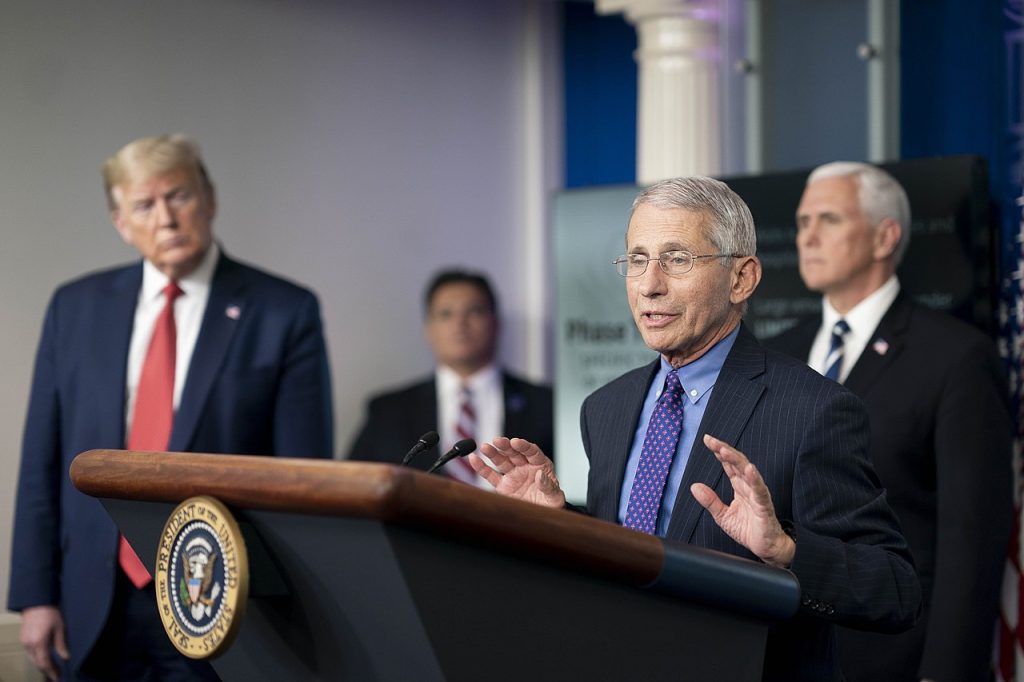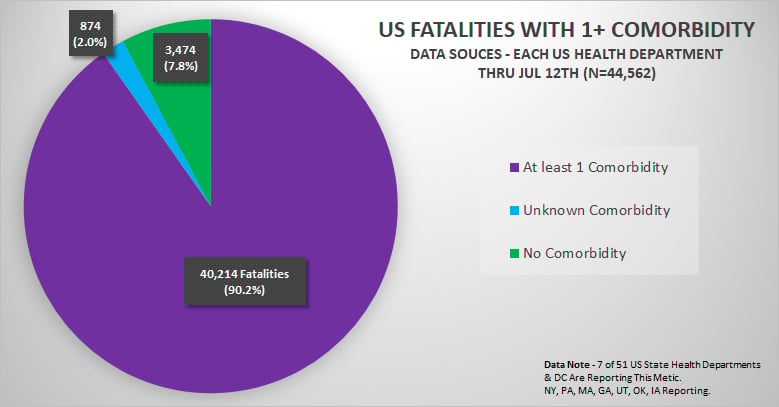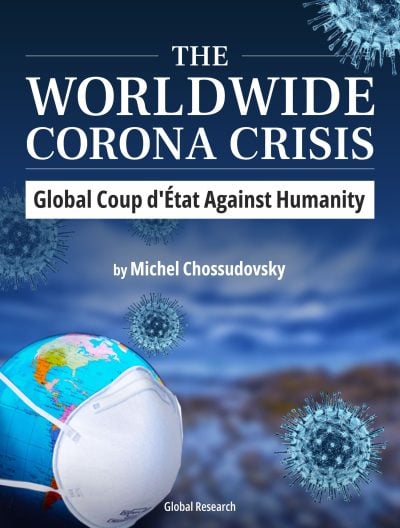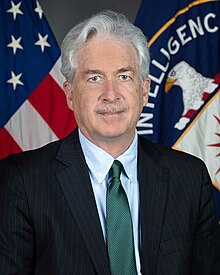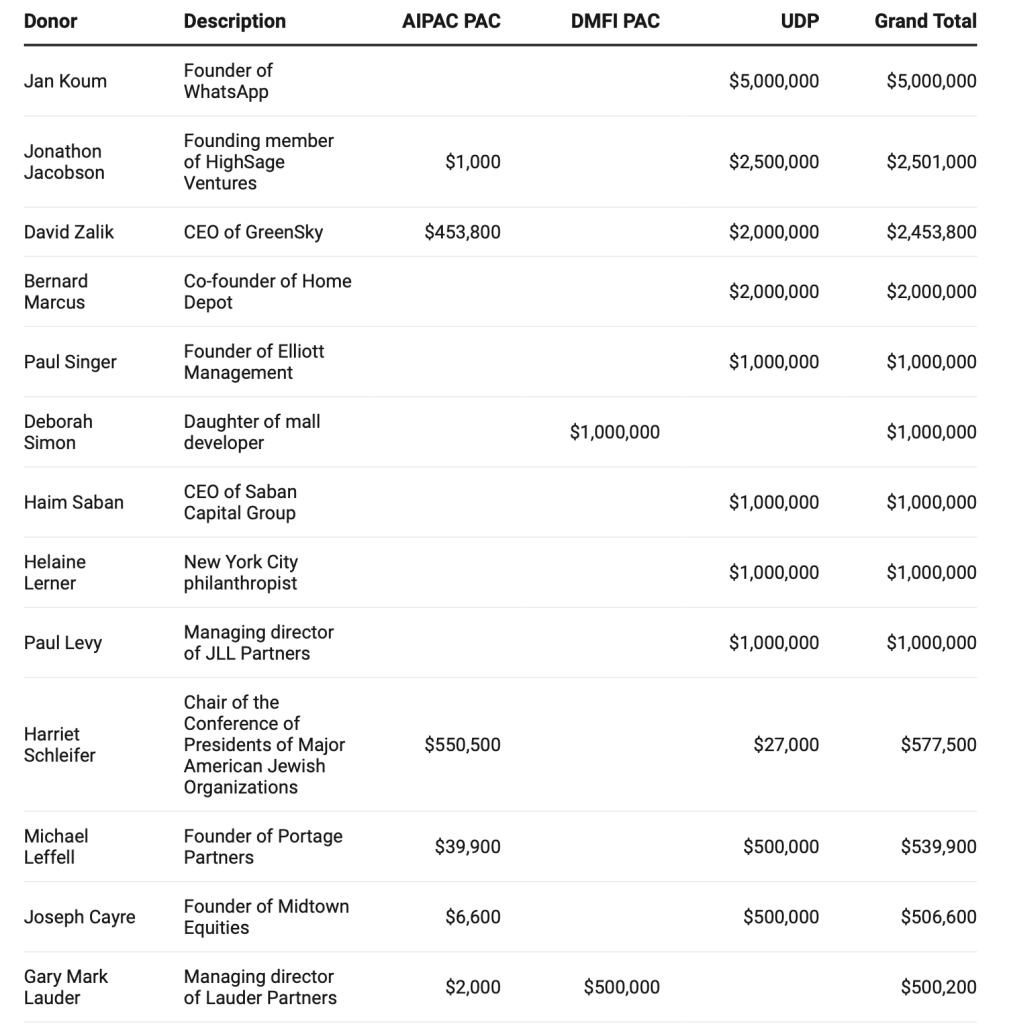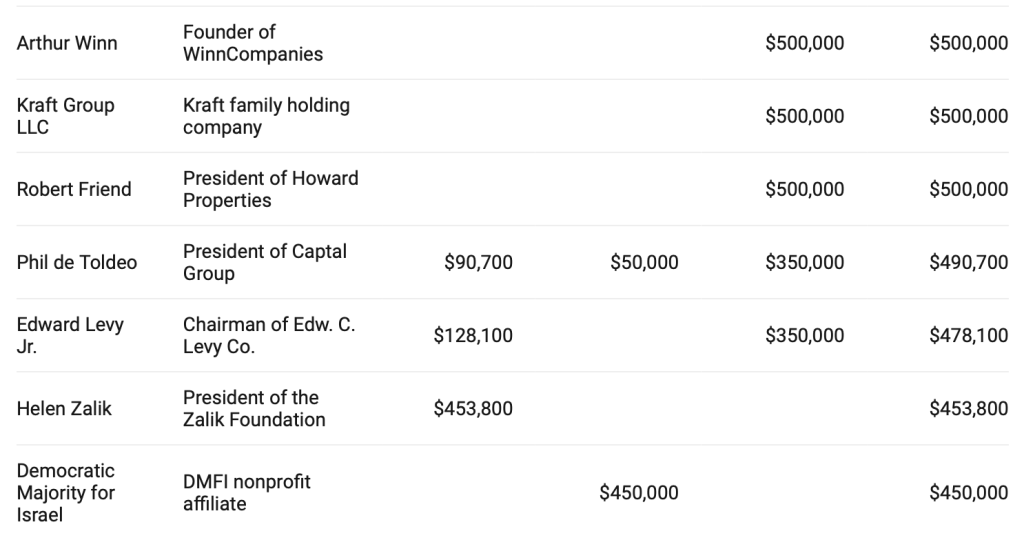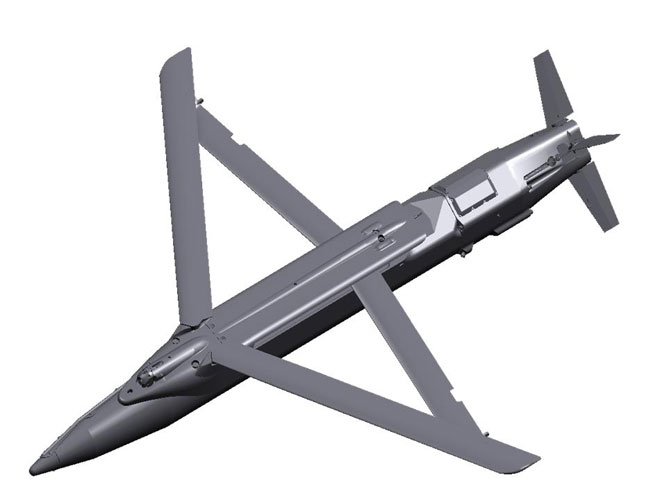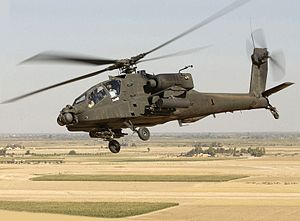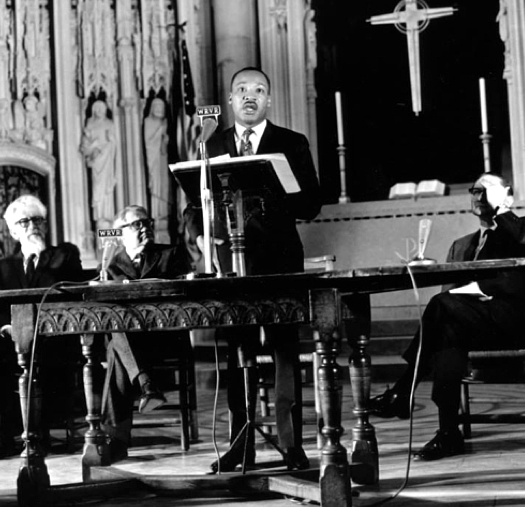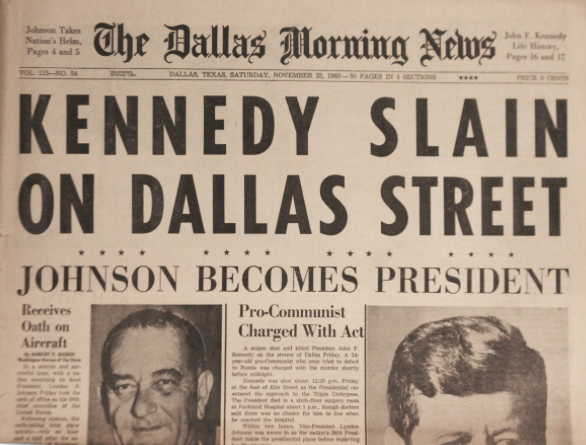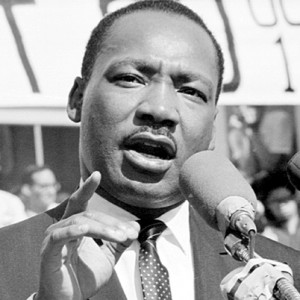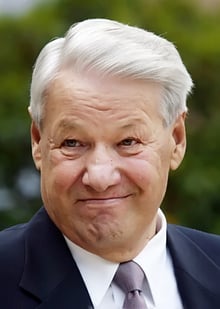All Global Research articles can be read in 51 languages by activating the Translate Website button below the author’s name (only available in desktop version).
To receive Global Research’s Daily Newsletter (selected articles), click here.
Click the share button above to email/forward this article to your friends and colleagues. Follow us on Instagram and Twitter and subscribe to our Telegram Channel. Feel free to repost and share widely Global Research articles.
Global Research Wants to Hear From You!
***
In the last decade xenophobic tropes intended to stoke fear and loathing of Chinese have accelerated ominously in the American mainstream media as many public officials of both parties label China as our “adversary” or even our “enemy.”
This last formulation is deep cause for growing alarm, especially because many decisions have been made to agitate Beijing and its unambiguous position on the “red line” over the issue of Taiwan. One American general asserts that war between the two nations will begin in 2025.[1] The Pentagon’s official budget approaches one trillion dollars and research is under way to “modernize” the nation’s nuclear arsenal.
According to the Merriam-Webster Dictionary, “xenophobia” is defined simply as “fear and hatred of strangers or foreigners.” When reports circulated that the Covid virus emerged from a laboratory in Wuhan, China (a cooperative effort between Beijing and the U.S.), anti-Chinese/Asian violence itself became epidemic overnight. Ever-increasing bulletins about the menace of “communist” China and its threat to the American economy have proliferated. The messages of mainstream media are controlled by policy makers in and outside the American government who abrogate the hypocritically vaunted principle of press freedom and thereby “manufacture” the consent of the public.
In 2021 the U.S. Department of State unequivocally stated that:
“The Chinese Communist Party (CCP) poses the central threat of our times, undermining the stability of the world to serve its own hegemonic ambitions. Despite efforts to defend its malign actions, the People’s Republic of China (PRC) under the control of the CCP is not a model world citizen.”[2]
The State Department then goes on to cite China’s “predatory economic practices, military aggression, disregard for human rights, [and] environmental abuses,” as if the U.S. is not seen by many nations across the world as the worst offender on these matters.
It is true that Beijing has increased its nuclear warheads, launched another ultra-modern aircraft carrier armed with hypersonic missiles, and is steadily modernizing its military overall.
But the obvious response to this is that, certainly since the Korean War when General Douglas MacArthur openly advised using atomic weapons to create a “radioactive belt” across China and President Harry Truman and Dwight Eisenhower then publicly threatened their use, China has every reason to fear and mistrust the U.S. A decade later the Chinese acquired their own nuclear weapons.
Exactly how does the PRC threaten the U.S., much less the world? Are Chinese naval and air bases parked off American shores as the U.S. has established only miles off China’s coast? Are thousands of Chinese troops stationed in nearby countries only miles from U.S. borders? Have Chinese forces invaded, much less totally desolated, other nations thousands of miles distant, as assuredly the U.S. has done since it rose to the top of the international dog-fight for control of the world in 1945?

Source: twitter.com
Despite formal agreements made decades ago by the Nixon and then Carter administrations that the United States recognized a “One China Policy,” American policies today manifestly encourage Taiwan’s independence, or at least its full autonomy with staunch political, economic and military links, and reliance upon the U.S. full independence, China asserts, shall not pass. Just as China has taken control of the former British colony of Hong Kong, so the Chinese Communist Party (CCP) asserts that Taiwan will be ruled from Beijing.
The current crises in Gaza-Israel and Ukraine dominate public attention and befogging awareness of the other critical geo-political inflection point between the United States and China. General Secretary Xi Jinping has stated categorically that Taiwan will not become the independent nation it obviously desires to be because it believes it has American support to succeed at this goal.
If the U.S. acts militarily to defend Taiwan from a Chinese armed incursion into what it avows is its own national territory, as President Biden has flatly declared he would do,[3] the result would rapidly progress into catastrophic war and all but inevitably then to nuclear exchanges.
In a phone call with Biden in July 2022, Xi warned against “playing with fire” over Taiwan, saying “those who play with fire will perish by it.”[4] American naval penetrations of territorial waters claimed by China, U.S. Navy and Air Force flyovers extremely close to Mainland China, and near misses between American and Chinese aircraft, are on-going.
Emphasis on the term “communist” to describe China today is a clear ploy to resurrect the “specter of evil” propaganda that suffused the American post-World War II geo-political atmosphere, thereby enabling the U.S. itself to conduct utterly malign wars in Korea and Vietnam and more.
The designation of communism long ago ceased relevance. The reality is that China practices its own form of capitalism that deeply competes with American aims and will not submit to the fantasy of a “rules-based international order” imagined and enforced from Washington in which China plays the role of junior partner, or “model citizen.” That is the crux of the problem. The issue of how to make a world profitable for American commercial and financial interests, and to contain or crush any serious competition, is and has always been the sine qua non of U.S. foreign policy, with deep roots extending back to the nascent country’s earliest relations with China.
Since the establishment of the republic, American elites have often and successfully unleashed floods of xenophobic propaganda against those whom they wish the public to abominate, beginning with native peoples, then Africans and even white Irish. Then came the immigrant Chinese: first, when they were recruited as peon labor during the Gold Rush, then when thousands of laborers were critical to build half the Transcontinental Railway.
Thence, Chinese lived in segregated ghettos chiefly on the West Coast and were soon vilified as gangsters, opium dealers and prostitutes. Unhappy that Chinese born in the U.S. received constitutionally guaranteed citizenship, Congress passed the Chinese Exclusion Act in 1882 to limit their further rise in population. By the late 19th century, the phrase “yellow peril” became commonplace when referring to Chinese and any Asians.

Late 19th century yellow peril cartoon. [Source: mediad.publicbroadcasting.net]
The roots of Chinese distrust of the U.S. and the West date back longer than most Americans realize. Western exploitation and attempted colonization of Chinese territory extends back more than two centuries. Racist anti-Chinese attitudes were much in evidence in the “China Trade” during the early years of American independence, when merchant vessels undertook long voyages to Guangzhou, the port they labeled “Can Ton.” Canton, a town in Massachusetts near Boston, is thought to have been named because many China Trade merchants settled there.
Few of them regarded China’s 5,000-year-old civilization as worthy of note, seeing it as backward and primitive compared to their own self-importance. In turn Chinese traders saw Westerners as “barbarians” with little to offer them. They would happily sell spices and porcelain desired by American elites but found little of interest to purchase from Westerners.
Matters changed radically in the early 1820s. The British East India Company had learned that production of opium in its Indian colonies was highly profitable when sold throughout Asia. Having seized its first Chinese colony of Hong Kong the Brits saw a vast market for the substance in China and elsewhere. Traffic in opium soon also opened possibilities for American merchant enrichment, and in Massachusetts especially. The Chinese rulers soon realized how destructive opium addiction was to their society and how rapidly it was spreading.
The Qing dynasty’s attempt to limit the opium traffic was met with violence, initiating two major wars in the mid-19th century, after which Britain imposed harsh terms on the declining imperial system and began a series of encroachments on Chinese territory and independence. The weakness of the Qing emperor was duly noted by many Western nations, including the United States.

Depiction of Commissioner Lin Zexu presiding over ceremony dumping British-trafficked opium at sea. [Source: opiumqingwar.weebly.com]
Though Boston merchants came to control only ten percent of the opium trade in China, they were vastly enriched and some of the profits financed the early industrial revolution in America, as well as the physical development of Boston itself and institutions like Harvard University. Many aristocratic figures known as “Boston Brahmins” owed their fortunes to opium, among them the grandfather of President Franklin Roosevelt, Warren Delano.
Opium merchants were well aware of the addictive qualities of the substance, that drove the demand, and their desire for ever-increasing profits overrode any concern. Before long opium addiction also began to spread in the U.S. itself, evolving then to morphine addiction among Civil War veterans, and on to the heroin plague of the 20th century. Today, trade in addictive drugs accounts for an enormous slice of legal and illegal global “trade.”
As immigration from Europe in the 19th century swelled the U.S. population exponentially, American annexation of other people’s land also escalated. The religious doctrine of “Manifest Destiny” claiming that “Divine Providence” intended the U.S. to civilize the New World was in full flower.
After deliberately and dishonestly provoking war with Mexico and taking another quarter of today’s territory by force, the United States had reached the end of continental expansion and its Pacific boundary. The rapidly intensifying industrial revolution that took root at the end of the Civil War created a “crisis of overproduction” leading to mass unemployment and domestic labor strife.
Two major depressions occurred back-to-back, leading most financial, political and military elites to conclude that overproduction compelled a quest for “ultimate supremacy” in the world markets.[5] With the four-centuries-old Qing dynasty in clear decline, the “Great China Market” became the object of international contention. Britain, France, Germany, Russia, Japan and others began to carve out separate colonies along coastal China for their individual economic benefit.

In 1904, Judge, a weekly satirical magazine, ran this cartoon titled “The New Square-Deal Deck,” with Theodore Roosevelt saying, “Come, now, gentlemen; it is time to throw aside that worn-out deck and try one which will give both of you a square deal.” The Chinese Exclusion Act of 1882 was repeatedly extended, sparking anger from the Chinese government and overseas Chinese. In the picture, a Chinese and Uncle Sam take turns to play their political cards, neither side willing to give in. [Source: thinkchina.sg]
The U.S. insisted, however, on the “Open Door” to all of China’s resources, including cheap labor, by all contestants in unbridled competition, also introducing the phrase “laissez-faire” to claim that all would have equal access in a “free market.” In reality, Europeans knew that America’s economy was rising rapidly and would soon outstrip and outcompete their own. We rarely hear of the “Open Door Policy” today, yet it remains the bedrock doctrine of American economic, political and military strategy planet-wide, or what has become termed the “rules-based international order”—the rules to be established and enforced by Washington.

Source: britannica.com
There was domestic resistance to the Western, and Japanese, overrun of coastal China and annexations of territories. The ever-weakening Qing dynasty allowed foreign powers to occupy and administer Chinese areas to their own advantage, much to the grievance of the Chinese population.
In 1900 a people’s uprising against this foreign exploitation erupted, known as the Boxer Rebellion, deriving its name from a secret martial arts society. Thousands of young Chinese attacked the outposts of foreign occupiers and demanded their expulsion from all Chinese territory.
The U.S., European powers and Japan all committed troops against the rebellion and shortly crushed it, setting in motion critical events throughout the 20th century that advanced the evolution of modern China. We can be sure that the Chinese people have not forgotten this history. Most Americans are clueless.

U.S. troops in China during the Boxer Rebellion. [Source: historylink101.com]
The escalating rivalry of Europeans in Europe itself led to all-out war in 1914 and this induced all powers except Japan to withdraw from China. The U.S. financed the Allies and avoided entry into World War I until the last year when it became clear that the debts owed by Britain, France and Russia would never be paid unless American military forces tipped the balance on the battlefield.
At the same time Washington understood that it had become the dominant economic power on Earth. President Wilson attempted to foster an international League of Nations that would be financially indebted to the U.S. but Britain held on to its shrinking power and began to stir the next round of war. The so-called “Peace of Versailles,” by which Germany was held entirely to blame for the war and forced to accept military occupation and pay enormous reparations to the Allies, all but ensured the rise of the Nazis.
In China the suppression of the Boxer Rebellion by foreigners set in motion the collapse of the Qing dynasty that was overthrown by a combination of Nationalists, known as the Kuomintang, who sought to form a Western-style republic, and early socialists influenced by European ideas and the revolution in Russia. Initially, the two movements attempted co-operation but soon split violently. Chiang Kai-shek had become leader and virtual dictator of the Kuomintang and, in 1927, conducted mass executions of communists leading immediately, and for more than 20 years, to bloody civil war. At roughly the same time Japan invaded Manchuria and began its takeover of China and southeast Asia.
The attack by Japan on Pearl Harbor was not the “cause” of war between Tokyo and Washington. Japan had burst upon the international scene as a result of conflict with the U.S. in the 1850s when American naval forces had “opened” Japan with the threat of force to American and Western commerce.
Until that time Japan was a deeply insular civilization, but its leaders looked around Asia and saw that “the West” was subordinating and colonizing many peoples. Japan deduced that it could soon be next so, virtually overnight, it modernized entirely and began to do what the Europeans and Americans had been doing.
First, Japan waged war against China and occupied a large province, moving from there to the conquest and occupation of Korea and then, during World War I, seized Germany’s Pacific island colonies. In 1931 Japan invaded Manchuria in northern China and, by the end of the decade, occupied much of French Indo-China and the Dutch East Indies (Indonesia today).
Japan was closing the Open Door.
At the same time Nazi Germany was closing much of Eastern Europe and the Soviets had already closed out most American commerce in their vast area. As the Great Depression deepened, the U.S. was shut out of markets. Tokyo was able to attack the U.S fleet in the mid-Pacific because Washington had deliberately left it vulnerable, knowing that the attack would inflame public opinion that previously had been adamantly against entering the war.
By no means did Tokyo have the military potency to invade the U.S. and force it to Japan’s will, nor did it have the remotest desire to do so. Japan’s strategy was to knock out any American capacity to jeopardize Japan’s imperial desire to dominate Eastern Asia and have time to build itself a powerful empire in opposition to the Americans, British, French and Dutch. As for Germany, the Third Reich proved unable to cross the English Channel. How could it cross the Atlantic to attack the U.S.?
Neither Germany nor Japan wanted war with the U.S. The Roosevelt administration entered World War II deliberately, not because it was threatened militarily but because it knew it had the industrial capacity to produce a war machine more than capable of victory, and saw opportunity finally to open China on terms long desired by key American economic, political and military elites.
During the 1930s, in the lead-up to war, the U.S. State Department, and elements of the soon-to-be Central Intelligence Agency, crafted a secret alliance with the Kuomintang. At least a year before Pearl Harbor, American pilots were released from duty in the U.S. Army Air Force, in clear violation of Congress’s Neutrality Laws, and were soon flying Kuomintang aircraft provided by the U.S. against Japanese troops in China.[6] That was only one major provocation leading Tokyo to prepare for war with the United States. (See Jeremy Kuzmarov, “Eighty Years of Lies,” CovertAction Magazine, December 7, 2023).
In the month before Japan’s fiery atomic collapse Soviet entry had quickly overrun China and Korea and virtually guaranteed the ascendancy of the Chinese Communist Party (CCP) and the escape of the Kuomintang to the island of Taiwan in 1949. Washington immediately condemned the communist government as illicit, recognizing instead Chiang Kai-shek’s regime on the island, the Republic of China (ROC), as the only valid government of China.

Dwight Eisenhower rides in a motorcade with Chiang Kai-Shek in Taiwan in the early 1950s. [Source: new-life-movement.fandom.com]
The United States had lost China to the Chinese—the wrong Chinese. The U.S. then threatened the use of nuclear weapons against China.
It is important to note that the Soviet Union could probably have guaranteed the entire takeover of Korea by communists. However, contradicting the standard portrait of communists. the USSR made a deal with Washington. American troops had played no role on the ground in Asia.
After crushing Japanese resistance Stalin essentially invited American forces into southern Korea, temporarily dividing it until such time that the nation could hold elections. American strategists, seeking a foothold on the ground in Asia, consented to the deal but knew that such an election would be won by the “commies” who had earned much popular support.
Just as Chinese communists had won loyalty from masses of peasants because of their opposition to Japanese and Kuomintang corruption, so had the Korean communists in their military campaigns against the hated Japanese occupiers. Therefore, the U.S. allowed rigged elections only in the south.
In 1949-1950 numerous cross-border military incidents on both sides raised tensions. When the northern communists suddenly “invaded” their own country, the Korean War broke out. President Truman ordered hundreds of thousands of troops to the south, calling it a “peace action” under authority of the Security Council of the United Nations. Truman claimed in October 1952 that “we are fighting in Korea so we won’t have to fight in Wichita, or in Chicago, or in New Orleans, or on San Francisco Bay.”[7]
Early in the war the commander of American forces, General Douglas MacArthur, pushed north, driving communist forces back. Realizing that American troops would soon be on their borders, the Chinese Army crossed into Korea and drove “allied” forces back into the south with heavy losses, creating a real possibility of a devastating American rout. Secretary of State Dean Acheson frankly stated that “the defeat of U.S. forces in Korea in December (1950) was an incalculable defeat to U.S. foreign policy.”

U.S. forces in North Korea during the Korean War. [Source: commons.wikimedia.org]
At that moment MacArthur issued his open threat to use atomic weapons to create a “radioactive belt” along China’s southern border. He was forced to resign his command. Yet, shortly thereafter, President Truman stated publicly that the use of atomic weapons was under “active consideration.”
As the war ground on to stalemate, the failure of negotiations in 1953 led recently elected President Dwight Eisenhower also to threaten use of nukes, which resulted in the current Armistice, a cease-fire, not a peace treaty. Today Korea is still divided and technically in a state of war. The U.S still has approximately 30,000 troops stationed on North Korea’s borders, close to China and Russia, and nuclear weapons aboard the American submarine fleet.
In the decade following the Korean War, China achieved its own nuclear force. According to the Pentagon Beijing has 500 nuclear weapons. The Bulletin of the Atomic Scientists states that at least 100 of these are capable of reaching American cities.
In 1972 the Nixon administration and the PRC issued the joint “Shanghai Communique” in which Washington “acknowledges that all Chinese on either side of the Taiwan Strait maintain there is but one China and Taiwan is part of China,” adding that the U.S. “does not challenge that position” and affirmed the “ultimate objective of the withdrawal of U.S. forces and military installations from Taiwan.”
On January 1, 1979, President Jimmy Carter, following Nixon’s “opening” to China, issued another communique stating that the United States would henceforth diplomatically recognize the communist People’s Republic of China (PRC) and renounce recognition of the “Republic of China” (ROC), the Kuomintang regime that had ruled Taiwan as a U.S. client for 30 years.
Carter’s televised communique stated that “The government of the United States of America acknowledges the Chinese position that there is but one China and Taiwan is part of China.” In a separate statement Carter announced that his administration would terminate the U.S.-ROC defense treaty and withdraw military personnel from Taiwan within four months.
Carter’s position was immediately attacked by opponents of the measure in Congress, arguing that the statement did not unambiguously stipulate that the U.S. agrees that “Taiwan is part of China,” only that it recognized that China believed so. Whether this was a deliberate loophole, or a flaw in diplomatic language, the result was that Congress soon passed the 1979 Taiwan Relations Act that all but negated Carter’s stated desires.
The TRA clearly enables the U.S. to continue the supply of weapons and “defensive service” (i.e., American military advisers) to enable the island sufficient self-defense capability and to resist “any coercion that would jeopardize the security, or the social or economic system” of Taiwan. In 1982 President Ronald Reagan authorized officials to convey to the PRC that the U.S. did not agree to a date for ending arms sales to Taiwan. Those sales continue.[8]
Thus, the current environment between the two superpowers is designated as “strategic ambiguity” that, according to the RAND Corporation, is designed “to keep all parties guessing” and foster “dual deterrence” i.e., Taiwan won’t initiate war by declaring independence while China is restrained by the possibility of American defense of Taiwan if it does. More than a few strategists in both parties think that the U.S. should provide Taiwan with a NATO-style security guarantee. That anyone in a position to influence American policy thinks this way is a measure of how fundamentally irrational and uncoupled from reality Washington is becoming. The threat of NATO on Russia’s borders has led to the deaths of hundreds of thousands, and led Russia to promise nuclear retaliation should the U.S./NATO directly intervene.
The PRC’s military analysts have noted that Beijing will be ready to launch a full-scale invasion of its own territory in a few years.
Consider the following imaginary scenario: The United States is rapidly coming apart ideologically. Some states like Texas are in open defiance of Washington on the crisis at the Mexican border. From 1836 to 1845 Texas was an independent “nation” before being annexed by the U.S.
In June 2022, the Texas Republican Convention adopted a platform urging the legislature to put a referendum before the people of Texas in November 2023 “to determine whether or not the State of Texas should reassert its status as an independent nation.” Does anyone believe that the U.S. government would allow such an eventuality? Supreme Court Justice Antonin Scalia asserted that the Civil War solved the constitutional issue of secession once and for all. Any attempt by Texas actually to secede would be sanguinary indeed since that state has more armed citizens than any other.
The imperial Qing dynasty occupied Taiwan in 1683 and China has claimed it for four centuries. Any attempt by Taiwan to “secede” from China will be far worse than bloody.
It is absolutely clear that the twin threats of extinction by human-caused climate change or nuclear war are truly the existential Catch-22s facing the human species. Can we finally learn that the identically insane international competition operational today that engendered both world wars in all probability is leading to the third and final one? What the world needs now is serious and committed international cooperation with an honest commitment to global disarmament… or else! Can geo-political intelligence on the part of masses of people overtake the psychopathy into which the human species is descending?
*
Note to readers: Please click the share button above. Follow us on Instagram and Twitter and subscribe to our Telegram Channel. Feel free to repost and share widely Global Research articles.
Paul Atwood, Ph.D. is retired but still teaches courses deeply critical of U.S. foreign policy at the University of Massachusetts Boston. After serving in the Marine Corps, he became active in antiwar efforts and veterans issues after discharge.
Notes
-
Air Force General Mike Minihan, “My gut tells me we will fight in 2025,” Reuters, January 28, 2023.
- U.S. Department of State, “Chinese Communist Party: Threatening Global Peace and Security,” January 2021.
- Associated Press, 2023.
- The Guardian, July 28, 2022.
- Thomas J. McCormick, China Market: America’s Quest for Informal Empire, 1893-1901 (Chicago: Ivan R. Dee, 1967).
- James Doubek, “The Flying Tigers: How a group of Americans ended up fighting for China in WWII,” National Public Radio, December 19, 2021.
- Paul L. Atwood, War and Empire: The American Way of Life (London: Pluto Press, 2010).
-
Congressional Research Service, “Taiwan: The Origins of the U.S. One-China Policy,” September 27, 2023.
Featured image source
 Rethinking Srebrenica
Rethinking Srebrenica










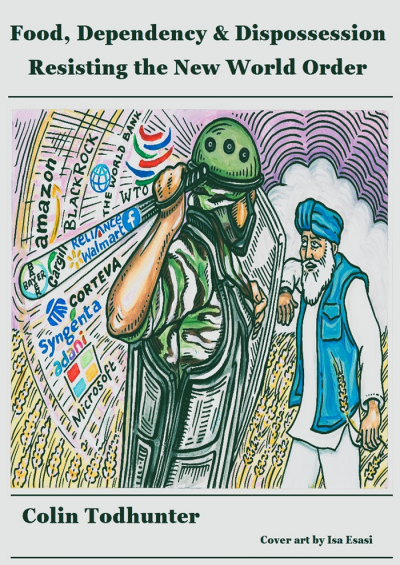 Read Colin Todhunter’s e-Book entitled
Read Colin Todhunter’s e-Book entitled
